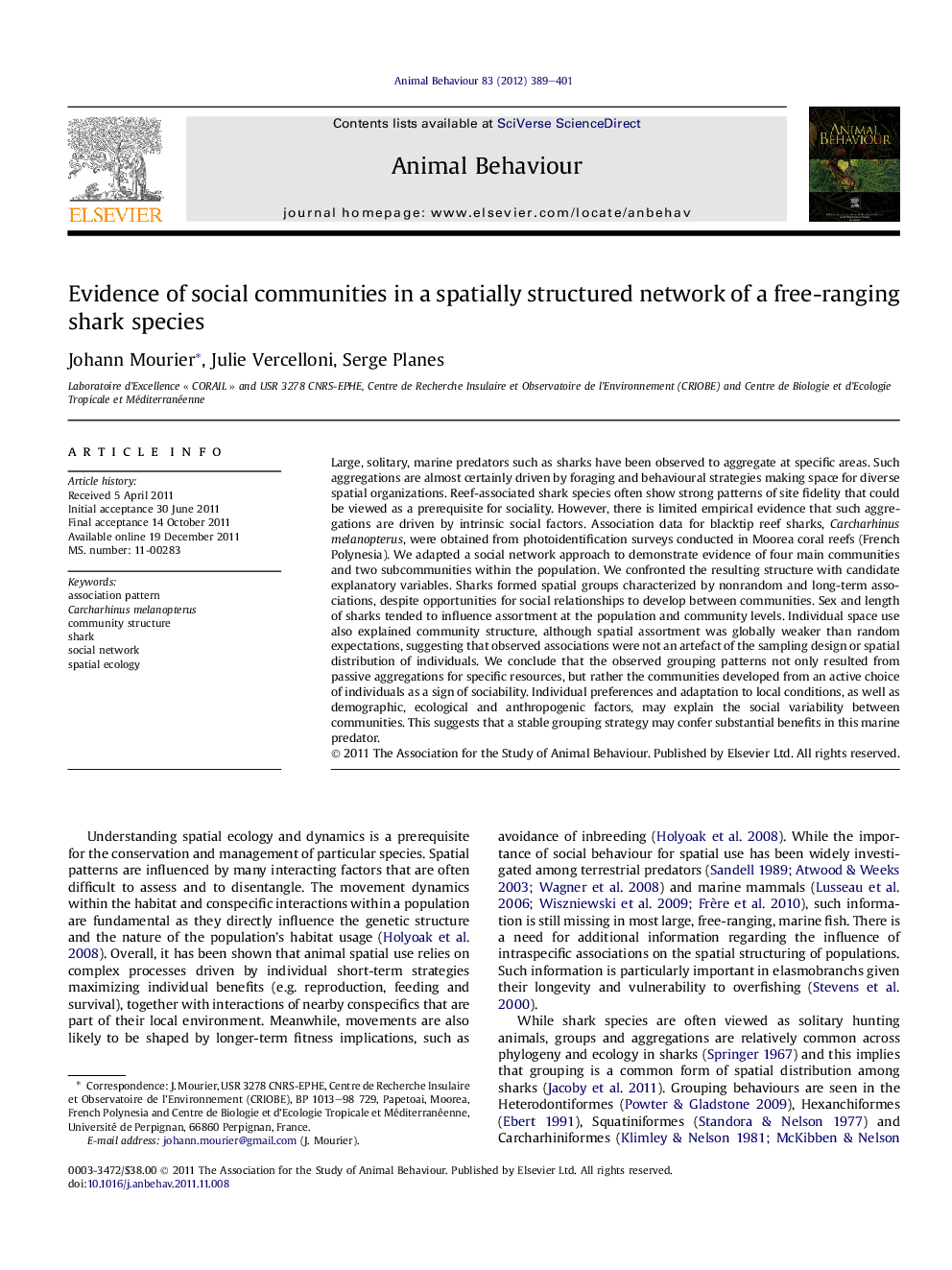| کد مقاله | کد نشریه | سال انتشار | مقاله انگلیسی | نسخه تمام متن |
|---|---|---|---|---|
| 2416716 | 1104293 | 2012 | 13 صفحه PDF | دانلود رایگان |

Large, solitary, marine predators such as sharks have been observed to aggregate at specific areas. Such aggregations are almost certainly driven by foraging and behavioural strategies making space for diverse spatial organizations. Reef-associated shark species often show strong patterns of site fidelity that could be viewed as a prerequisite for sociality. However, there is limited empirical evidence that such aggregations are driven by intrinsic social factors. Association data for blacktip reef sharks, Carcharhinus melanopterus, were obtained from photoidentification surveys conducted in Moorea coral reefs (French Polynesia). We adapted a social network approach to demonstrate evidence of four main communities and two subcommunities within the population. We confronted the resulting structure with candidate explanatory variables. Sharks formed spatial groups characterized by nonrandom and long-term associations, despite opportunities for social relationships to develop between communities. Sex and length of sharks tended to influence assortment at the population and community levels. Individual space use also explained community structure, although spatial assortment was globally weaker than random expectations, suggesting that observed associations were not an artefact of the sampling design or spatial distribution of individuals. We conclude that the observed grouping patterns not only resulted from passive aggregations for specific resources, but rather the communities developed from an active choice of individuals as a sign of sociability. Individual preferences and adaptation to local conditions, as well as demographic, ecological and anthropogenic factors, may explain the social variability between communities. This suggests that a stable grouping strategy may confer substantial benefits in this marine predator.
► We study a reef shark population at a Pacific island.
► A social network was constructed from association data.
► Nonrandom and long-term associations divided the network into communities.
► Associations were assorted by sex, length and spatial overlap.
► The population structure developed from active social affiliations between individuals.
Journal: Animal Behaviour - Volume 83, Issue 2, February 2012, Pages 389–401